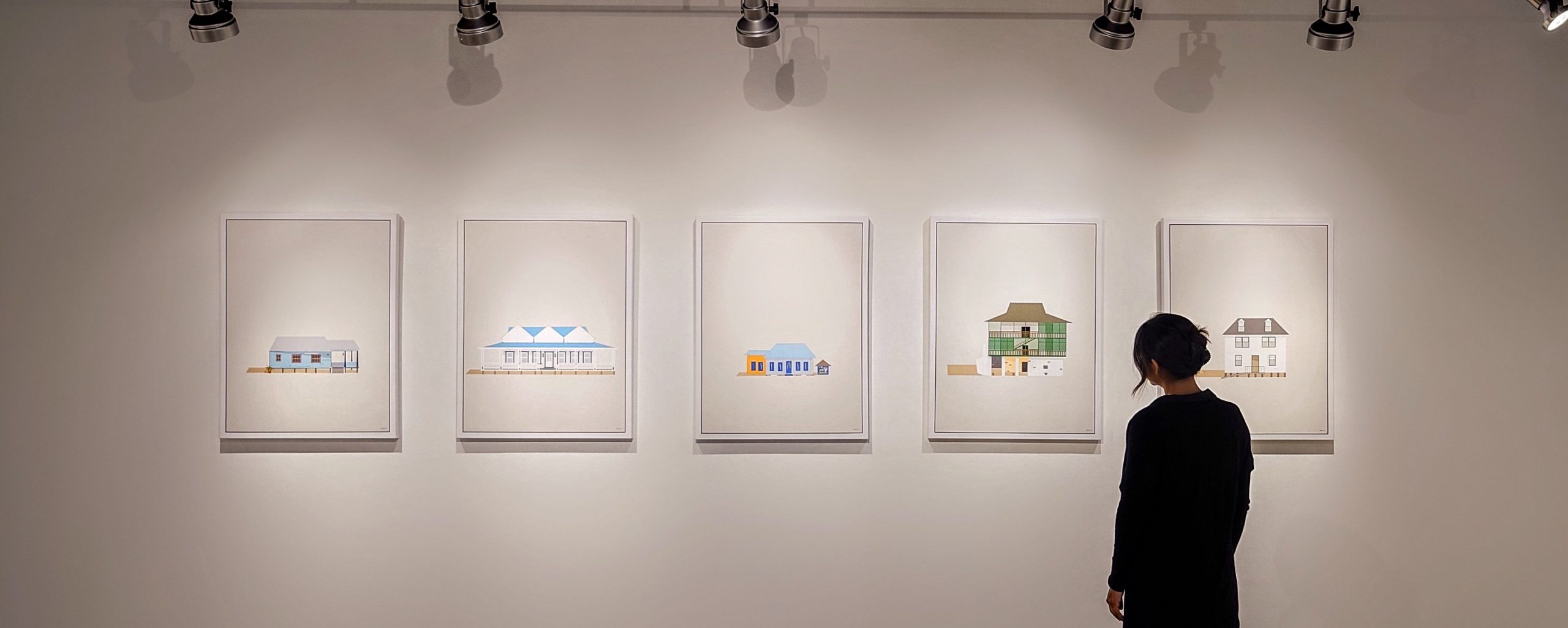I dwell in Possibility –
A fairer House than Prose –
More numerous of Windows –
Superior – for Doors –
– Emily Dickinson
Two of A+A’s favorite Cayman artists are featured in a new exhibition of those islands’ architectural heritage.
“Thatched Roofs & Ironwood Posts: The Art and Artistry of the Caymanian Home” explores the vernacular architecture of the islands – including works by architect John Doak and digital artist Shane Aquart.
This is a place, as Doak has chronicled, where the wattle and daub cottage was the indigenous dwelling. It was entirely framed from the ironwood forests that grew across the islands, impervious to termites. Walls were formed by woven wattles, then plastered with coral daub. Thatch roofs were formed by silver palm, an artform and craft that is now being resurrected.
A native of Scotland, Doak arrived on Grand Cayman in 1979 and has been practicing architecture there and across the Caribbean for 45 years. In 2013, his work in architectural preservation was recognized by Queen Elizabeth II with a Cayman Islands Certificate and Badge of Honour. He’s the author of the definitive book on the island’s architecture, “Cayman Style,” published in 2020.
His contribution to the exhibition includes drawings from his book, illustrating what he describes as elements of indigenous construction and the traditional styles of buildings on Grand Cayman. “I started drawings of old Cayman over 40 years ago,” he says. “All of the drawings I have in the show are black ink on paper, some with a light paint wash.”
One doubles as the exhibition’s poster. “It’s a drawing I did in 1990 to demonstrate the evolution of the walls and roofs of early Cayman Houses,” he says. “It’s now a part of the National Museum Collection which is pleasing.”
Also included are five works by Aquart, who’s known for his whimsical works in digital art – couples, cowboys, horses, Porsches and cartoonish little critters he calls “Dreadys.” He grew up in Jamaica, attended school in Canada and the U.S., lived in the Caymans in the early ‘70s, returning for good in the early 1990s. The National Gallery exhibited a solo show of his work in 2013, and he’s been featured in a number of exhibitions since.
Of the 50 works in the show, five are his. They’re mounted on one wall and include, left to right: Mission House, Miss Lassie’s House, Captain Spellman’s House (Cayman Brac) and Capt. Hurlston’s house, Pedro Castle.
They’re beautiful and articulate, the artist’s whimsy left behind in the studio.
“They’re showing a cross section of styles or types of traditional Cayman buildings of varying sizes – the cottage, the cabin and the house – using a muted simple background to focus the eye on the five buildings,” he says.
The idea behind the exhibition is to provide a timely reminder of the pressing need to protect the Cayman Islands’ historic structures – and preserve the fabric of its material history for new generations.
And who better to help do that than Doak and Aquart – two contemporary artists who continue to define the Caymans’ past and future?
For more, go here.





